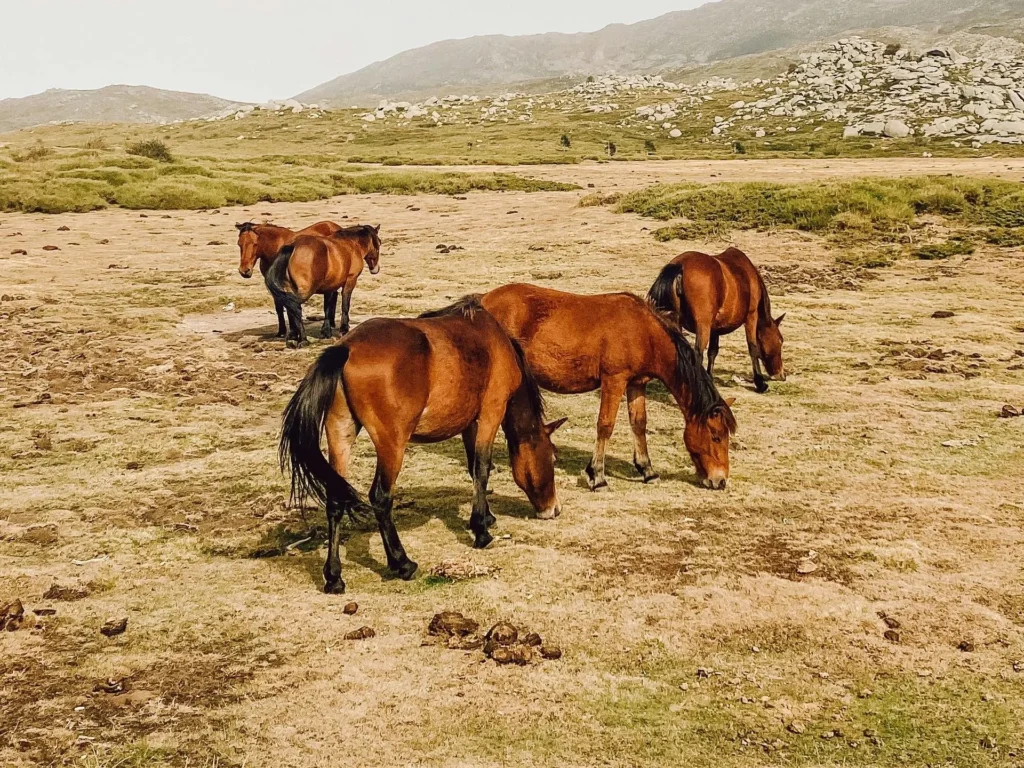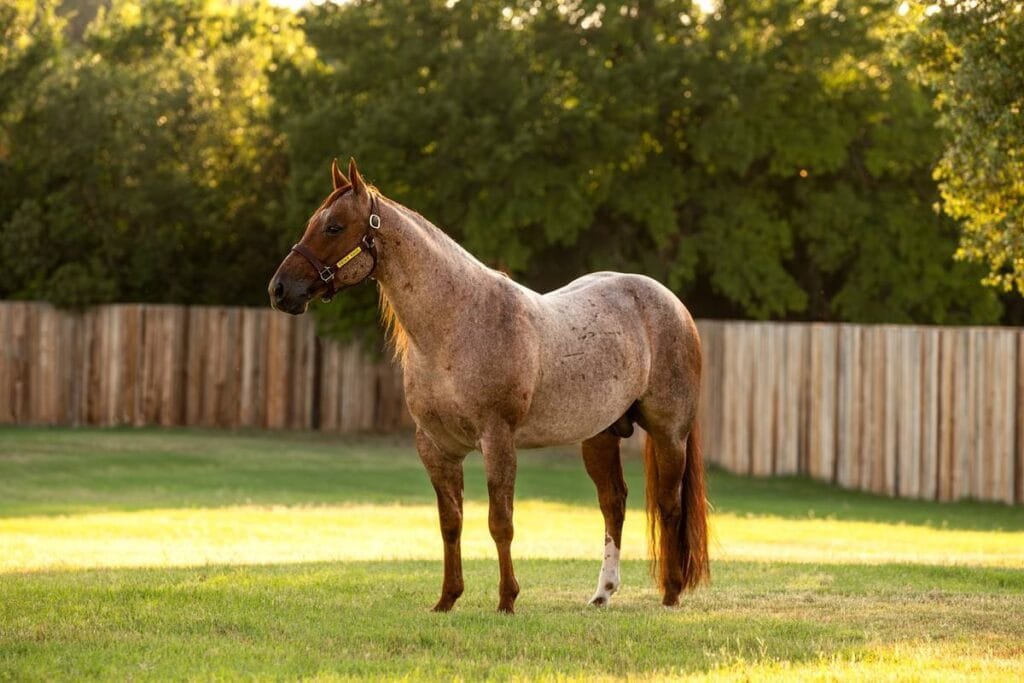The Corsican horse (also known as the Cavallo Corsu in Corsican) is a breed of horse native to the island of Corsica, located in the Mediterranean Sea.
This breed is known for its robustness, agility, and distinctive appearance, all of which are perfectly adapted to the rugged and hilly terrain of the island. The Corsican horse has been part of Corsican culture for centuries and has played an important role in the daily lives of the people, particularly in agriculture and transport.
In this article, we will explore the Corsican horse’s physical features, temperament, and history, and provide a detailed table summarizing the key aspects of the breed.
History of the Corsican Horse
The origins of the Corsican horse can be traced back to ancient times. It is believed that the breed developed from horses brought to Corsica by the ancient Greeks and Romans. Over time, these horses adapted to the mountainous terrain of Corsica, and their physical characteristics evolved to help them navigate the steep and rocky landscapes.
The Corsican horse is known to be one of the oldest breeds in Europe. It has been closely linked with the Corsican way of life, particularly in rural and farming communities. In the past, these horses were used for a variety of tasks, such as plowing fields, transporting goods, and even serving in the military. Their hardiness, strength, and stamina made them ideal for these labor-intensive roles.

Physical Features of the Corsican Horse
Corsican horses are known for their strong, muscular build and compact size. They are typically small to medium in height but possess great strength and agility. Their thick coats help them withstand the harsh Mediterranean climate, while their strong hooves and muscular legs make them well-suited for the rugged terrain of Corsica.
Here is a breakdown of the physical features of the Corsican horse:
| Feature | Details |
|---|---|
| Height | 12.2 – 14.2 hands (approximately 124 cm to 148 cm) |
| Weight | 400 – 500 kg (approx. 880 to 1100 lbs) |
| Coat Color | Bay, chestnut, black, or grey |
| Coat Type | Thick, dense, and water-resistant, with a soft undercoat in winter months |
| Body Type | Compact, strong, and muscular with a well-proportioned frame |
| Head | Small, with a broad forehead and a straight or slightly concave profile |
| Neck | Short and muscular, with a strong arch |
| Legs | Short but strong with dense bone structure and solid hooves |
| Tail | Medium-length, carried high with a slightly tapered shape |
Adaptations to Terrain
The Corsican horse’s small stature and sturdy build are key factors that make it well-suited to the hilly, rocky terrain of Corsica. Unlike larger breeds, these horses are able to navigate narrow, uneven paths and steep inclines with ease. Their hooves are particularly suited for the rocky ground, providing them with stability and traction.
Additionally, the breed’s thick coat protects it from the cold and wind that can be common in Corsica’s higher altitudes during winter. In summer, their coats shed to help keep them cool.
Temperament and Personality
The Corsican horse is known for its calm and docile nature. Despite their strength and agility, these horses are typically not aggressive. They are gentle, intelligent, and easy to train, which makes them suitable for a variety of purposes, from family farming to light work in rural communities.
These horses are also very independent and can be a bit stubborn at times, which can be a reflection of the harsh environment they come from. However, their loyalty to their handlers is highly valued. Historically, they were used as pack animals for transporting goods across the island’s mountains and rugged terrain.
Modern Uses and Conservation
In recent years, the Corsican horse has seen a decline in numbers, primarily due to the mechanization of agriculture and the decrease in traditional farming practices. However, there are ongoing efforts to preserve and protect the breed. Today, the Corsican horse is still used in some rural areas for light work, tourism (such as guided mountain rides), and cultural events.
Local conservation organizations, as well as the Corsican government, have worked to raise awareness of the breed’s significance to the island’s heritage. Efforts include breeding programs and the promotion of the Corsican horse in festivals and equestrian competitions.
Corsican Horse and Its Role in Culture
The Corsican horse holds a special place in Corsican culture. It is often seen as a symbol of the island’s independence and strength. In the past, these horses were an integral part of island life, and they still feature prominently in festivals and traditions.
The annual Fiera di a Cavallu Corsu (Corsican Horse Fair) is an event where the horses are showcased, and breeders and owners come together to celebrate the breed’s history and significance. This event serves as a reminder of the Corsican horse’s enduring importance to the island’s cultural identity.
Corsican Horse – Key Features Summary
To better understand the characteristics of the Corsican horse, here’s a table summarizing its key features:
| Aspect | Details |
|---|---|
| Breed Name | Corsican Horse (Cavallo Corsu) |
| Origin | Corsica, Mediterranean Sea |
| Height | 12.2 to 14.2 hands (124 cm to 148 cm) |
| Weight | 400 – 500 kg (880 to 1100 lbs) |
| Life Expectancy | 20 to 25 years |
| Coat Colors | Bay, chestnut, black, grey |
| Temperament | Calm, intelligent, loyal, and somewhat independent |
| Strengths | Excellent stamina, agility, and sure-footedness on rocky terrain |
| Use | Light work, tourism, cultural events, and conservation programs |
| Conservation Status | Threatened, with ongoing efforts to protect and preserve the breed |
| Festivals | Fiera di a Cavallu Corsu (Corsican Horse Fair) |
The Corsican horse is a remarkable breed, with a unique blend of strength, agility, and historical significance. Although its role has evolved over time, it continues to be an important part of Corsican heritage and identity. The ongoing efforts to conserve the breed will ensure that the Corsican horse remains a symbol of the island’s proud history for generations to come.
Whether you’re an equestrian enthusiast, a history lover, or simply someone interested in the rich culture of Corsica, the story of the Corsican horse is one that continues to inspire admiration and respect.
This articl




